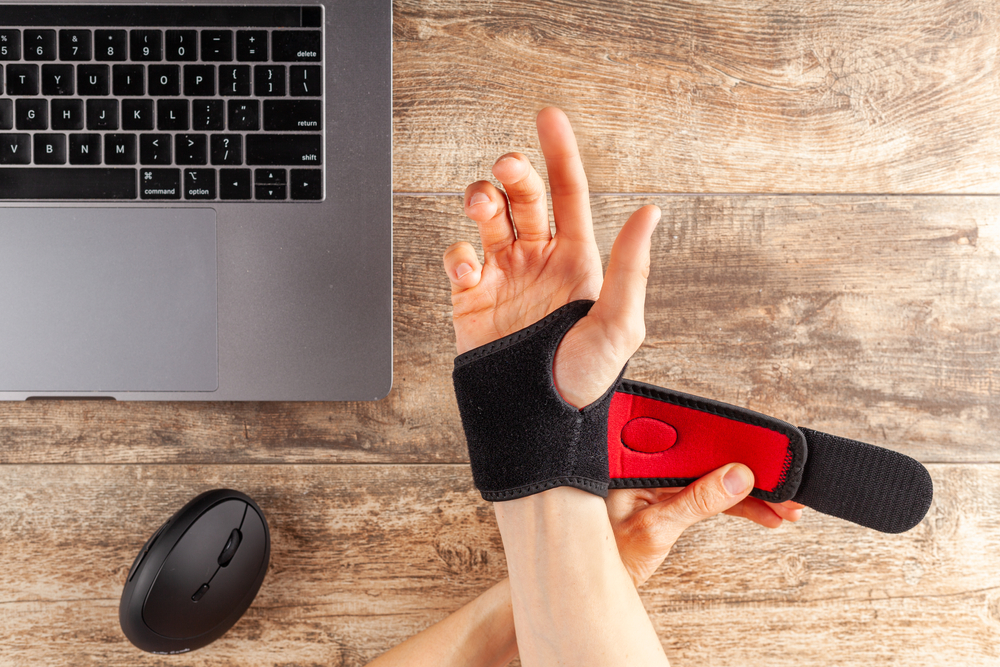Back to Basics is a weekly feature that highlights important but possibly overlooked information that any EHS professional should know. This week, we examine ergonomic hazards, solutions, and musculoskeletal disorder prevention.
Ergonomics is defined by OSHA as “fitting a job to a person,” and it can help lessen muscle fatigue, increase productivity, and reduce the number and severity of work-related musculoskeletal disorders (MSD). MSDs affect the muscles, nerves, blood vessels, ligaments, and tendons. Workers in all kinds of industries are exposed to risk factors for MSDs, such as heavy lifting, bending, reaching overhead, pushing and pulling heavy loads, working in awkward body postures, and repetitive task completion.
Hazard identification
To identify ergonomic hazards, employers should do periodic reviews of the facilities, specific workstation designs and work practice, and the overall production process, while keeping ergonomics in mind. OSHA recommends reviewing injury records, observing workplace conditions, and encouraging and utilizing early reports of injury while looking for hazards.
By reviewing the company’s OSHA 300 injury and illness logs, 301 reports, workers’ compensation records, and worker reports of issues, employers can catch ergonomic hazards and make changes to fix them. First aid logs, accident and near-miss investigation reports, and insurance company reports can also be used in this process.
The next step is to observe the conditions in the workplace in order to eliminate risks. According to OSHA, risk factors that contribute to MSDs include:
- Exerting excessive force – heavy lifting, pushing or pulling heavy loads, manually pouring materials, or maintaining control of tools and equipment
- Repetitive task performance – repeating the same motion or series of motions continually or frequently for an extended period of time
- Awkward postures – positions that place stress on the body such as repetitive reaching, kneeling, squatting, leaning, bending the wrists, or twisting the torso
- Localized pressure – pressing the body or a body part against hard or sharp edges, or using the hand as a hammer
- Cold temperatures – may contribute to MSDs along with the other hazards listed, especially in the meatpacking and poultry processing industries
- Vibration – whole body or hand-arm vibrations can cause damage to small capillaries that supply nutrients, and it can lead to loss of feeling or difficulty using hand tools
Exposure to a combination of these risk factors leads to a higher risk for MSDs. Employers should notice if their workers are modifying their tools, equipment, or work area, shaking their arms and hands, rolling their shoulders, or bringing products such as back belts or wrist braces into the workplace. If any employees are exhibiting these behaviors, it could be indicative of an ergonomic issue. Employers should ask their workers to see if there are risk factors present, and listen to their suggestions for change, as workers are able to provide important information about hazards in their workplaces.
Comprehensive injury reporting is crucial, and the goal should be to properly assess, diagnose, and treat MSDs. OSHA says that early reporting, diagnosis, and intervention can limit the severity of injuries, improve the effectiveness of treatment, minimize the likelihood of disability or permanent damage, and reduce worker compensation claims.
MSD Prevention
Successful ergonomic solutions and intervention include modifying existing equipment, making changes in work practices, and purchasing new tools or other devices to assist in the production process. OSHA says these changes reduce physical demands, eliminate unnecessary movements, lower injury rates and their associated workers’ compensation costs, and reduce employee turnover.
To reduce the chance of injury, OSHA recommends designing work tasks to limit exposure to ergonomic risk factors, first with engineering controls. If engineering controls cannot be implemented or if different procedures are needed after implementation of the new engineering controls, then administrative or work practice controls may be needed. Personal protective equipment (PPE) solutions only have limited effectiveness when it comes to ergonomic hazards.
Examples of engineering controls that help deal with ergonomic hazards include:
- Using devices to lift and reposition heavy objects
- Reducing the weight of a load
- Reposition a worktable to eliminate a long or excessive reach and enable working in neutral postures
- Use diverging conveyors off a main line so that tasks are less repetitive
- Install diverters on conveyors to direct materials toward the worker so there is no excessive reaching or leaning
- Redesign tools to enable neutral postures
OSHA recommends four administrative and work practice controls. Employers should require that heavy loads are only lifted by two people, and establish systems so workers are rotated away from tasks to minimize continuous, repetitive motions, and awkward postures. They should design a job rotation system in which employees rotate between jobs that use different muscle groups. Staff “floaters” should provide periodic breaks between scheduled breaks. Lastly, be sure that pneumatic and power tools are properly used and maintained.
PPE for ergonomic hazards includes the use of padding to reduce contact with hard, sharp, or vibrating surfaces. Workers can also wear good fitting thermal gloves to help with cold conditions while maintaining the ability to grasp items firmly.
For more information, click here to view OSHA’s recommendations for ergonomic hazards.

